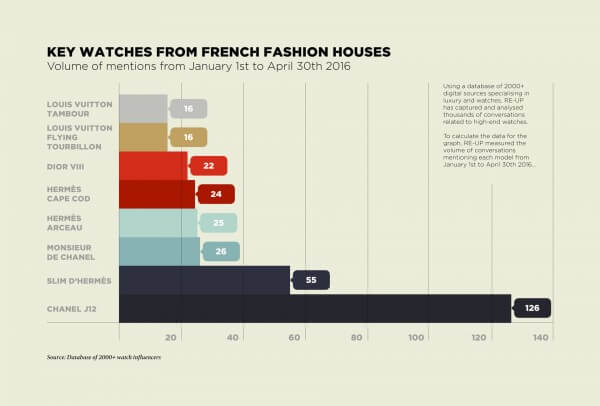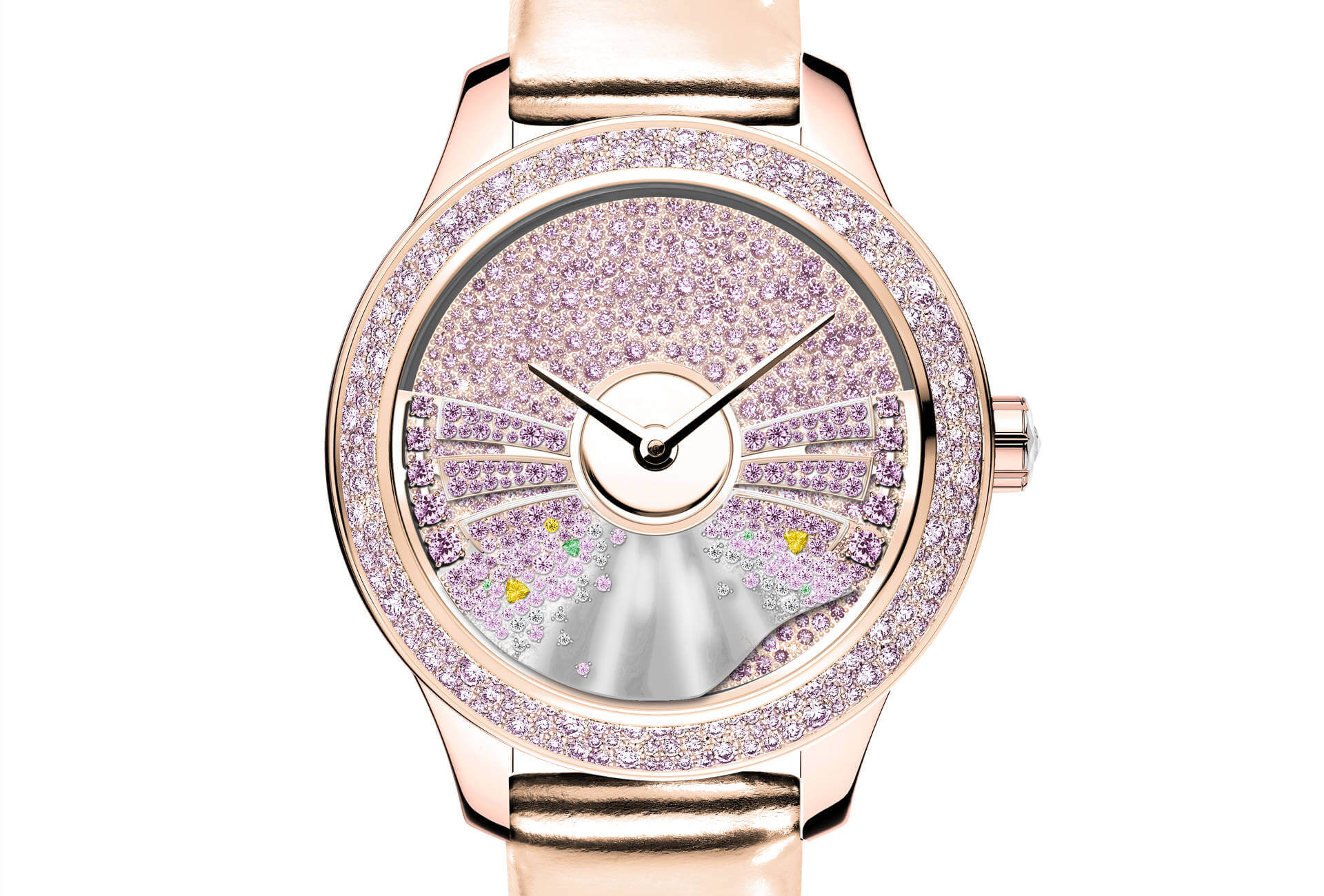Despite being renowned for a certain ‘Frenchness’ of style, all these brands have shifted their watch manufacturing to Switzerland in order to assert a proficiency in horology that they may not receive in France – as Georges Kern, chief executive of IWC Schaffhausen, puts it “The Swiss have the image of producing quality at the highest level, as the Germans have the image of producing the best cars in the world… and you cannot just copy this”.
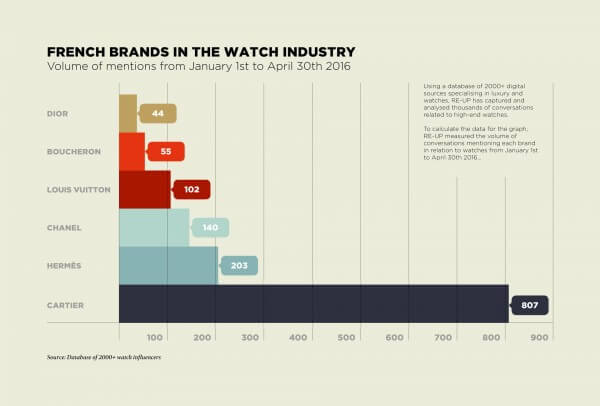
Made in Switzerland
Although best known for its leather bags, belts and jackets, Hermès – whose connection with watches stretches back to the 1920s when it first began designing wrist straps – made a significant step forward in the industry when it acquired a 25% stake in Vaucher Manufacture. Although previously successful with standard quartz and automatic movement models, including Arceau and Cape Cod, this ten-year relationship with Vaucher Manufacture has established the brand as a connoisseur of high watchmaking, with the Slim collection becoming a standout range – so far this year the Slim collection has generated 11.54% more social mentions than Jaeger-LeCoultre’s Master Ultra-Thin range.
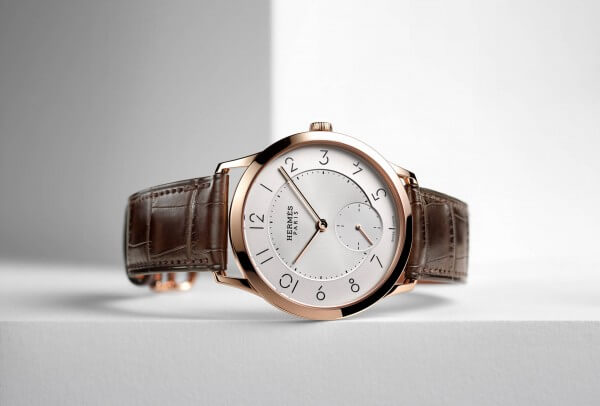
Elsewhere, French fashion house Louis Vuitton had already established its watchmaking credentials in 2002 with the release of the Tambour. It has continued to accelerate its input into the industry in recent years, snapping up small Swiss businesses, opening a Geneva-based facility, La Fabrique du Temps, in 2014, and receiving the Poinçon de Genève for its Flying Tourbillon in 2016.
So on the face of it, it would actually appear that French luxury brands want to distance their watchmaking divisions from their inherent ‘Frenchness’, to appear more proficient in the industry and earn greater respect from their peers.
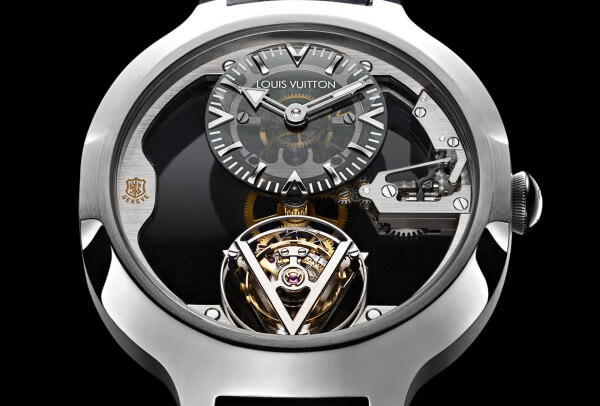
Fashioned by France
However, regardless of wanting their horology collection to embody the spirit and innovative nature of Swiss watchmaking, these houses maintain a strong connection between their finished timepieces and wider fashion collection. Although Chanel and Dior celebrate being ‘made in Switzerland’, their timepieces are intrinsically connected to their approach to haute couture, with the watchmaking divisions looking beyond the mechanics to create watches that proudly embrace the ‘fashion accessory’ label (a practice followed by the French jewellery and watchmaking brand Cartier). For instance, Dior’s most renowned timepiece, the Dior VIII, has in many of its varieties been designed to seamlessly integrate into the styles of outfits that they celebrate. The VIII Grand Bal plays on Christian Dior’s ethos of the importance of the ball gown, whereas Chanel’s popular J12 collection embraces the black and white fashion attire of Coco Chanel herself.
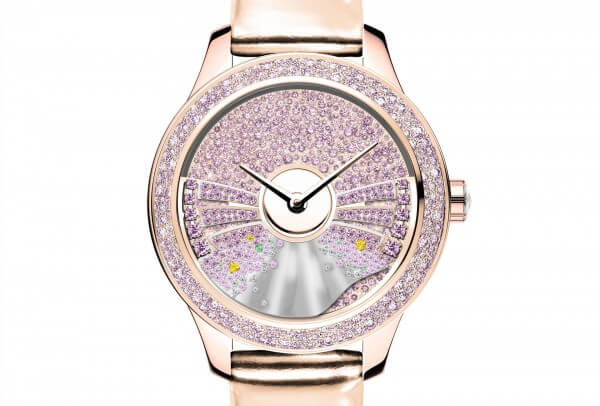
But perhaps the true significance of ‘style’ in French horology can be found in the métiers d’art. A practice famously embraced by Chanel’s watchmaking division for their Mademoiselle Privé collection, this approach looks towards transforming the watch dial into an artist’s canvas, allowing them to produce intrinsically detailed patterns and illustrations. At this year’s Baselworld, Chanel grew this collection with the introduction of five one-of-a-kind pieces inspired by Chinese Coromandel décors, featuring miniature birds crafted in 18k beige gold and surrounded by a pattern of flowers.
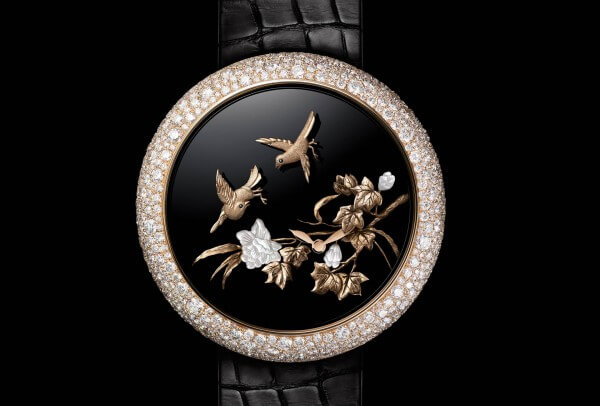
Similarly, Hermès embraced the métiers d’art with the introduction of three new pocket watches which were decorated using an enamel miniature painting technique and took inspiration from their ‘La Promenade de Platon’ silk scarf design, created by artist Annie Faivre. While French luxury houses may look to Switzerland for expertise in watchmaking itself, there is a shared philosophy between these brands, with a need for these timepieces to have a coherent connection to the wider fashion collection.
